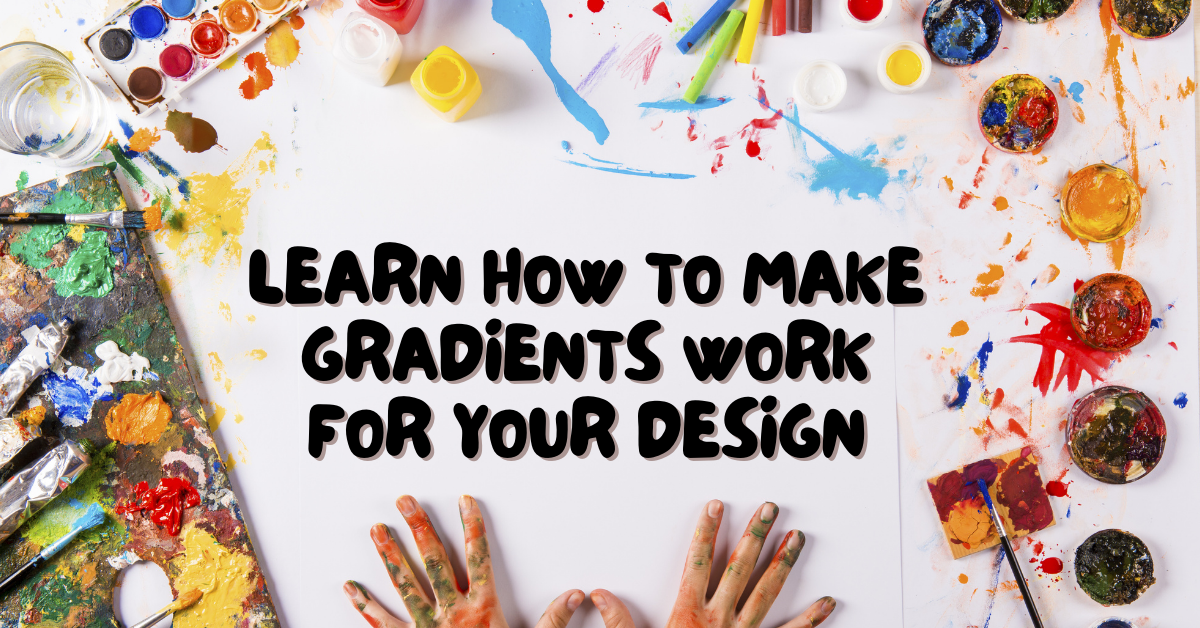If you’re looking to create a design that’s both modern and sophisticated, gradients are the way to go. However, not all designs work well with gradients. This blog post will teach you how to make sure your gradient is working for you instead of against you!
Choose the right colors for your gradient.
Use a range of colors that have enough contrast between them so they don’t look dull and blended together. Too much color blending can make a design seem flat, but too little will give off the wrong impression about what you’re trying to say with your design. For example, if you want to create an infographic about how food can affect your mood, you may want to use a gradient that has colors of the rainbow in it. By using different hues with enough contrast between them, you can create an infographic that looks exciting and is easy for viewers to read.
Use gradients wisely.
Avoid using the same gradient on every element of your design. If you do this, it becomes predictable and boring for people who are looking at it. It’s best to use different gradients that complement each other instead of creating a muddled look with too many of them in one place. For example, if you want to create an infographic that looks exciting, you can use gradients. Just don’t put them everywhere or it will become distracting for your viewers.
Don’t forget to use contrast.
Without enough contrast, gradients can make a design look messy and unorganized. To avoid this from happening, try making sure that the colors you’re using have different levels of luminance between them so they don’t blend together too much. Contrast is also necessary for allowing your viewers to be able to read the text you have on your design. Don’t be afraid of using bright colors with gradients either! For example, if you want to create an infographic that’s easy for people to read but have some fun at the same time, try making a gradient with a bright yellow color that gradually fades into white. This design is not only fun and creative, but it’s also easy to read!
Keep in mind that there are multiple ways to use gradients.
You can do all kinds of things with them, including creating a gradient background for an infographic or using one color to blend two other colors together. The possibilities are endless! You just need to be creative and experiment with what you can do.
Know your audience groups .
When you know your audience, you’ll be able to design something that’s easy and fun to read. For example, if you’re designing infographics for kids then it will probably work better with bright colors because they like them! You don’t want the infographic looking bland or boring either because that won’t grab their attention at all!
Make it fun and engaging.
When you’re designing your infographic, make it fun and interesting! You want people to engage with the information that you are putting out there. If they aren’t interested then why should they bother reading it? Some ideas could include using different fonts or having little characters in some of the sections. The possibilities are endless so get creative!
Conclusion
As you can see, adding a gradient to your design is not as complicated or difficult as it may seem. In fact, using gradients in your designs will add dimension and style to the final product–even if you don’t know how to make them work for your design! Gradients are beautiful! They’re very versatile in the sense that they can be used for all kinds of creative things including backgrounds, headers, logos & so much more! If this post has piqued your interest in gradients and you want more insight on all things art-related, be sure to join our blog at Artmeet.com. We have an entire section dedicated just to topics like these!

